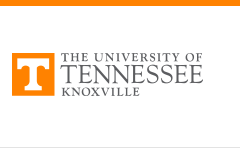
Doctoral Dissertations
Date of Award
12-2022
Degree Type
Dissertation
Degree Name
Doctor of Philosophy
Major
Microbiology
Major Professor
Todd B. Reynolds
Committee Members
Elizabeth Fozo, Tim Sparer, Francisco Barrera
Abstract
Mucosal and nosocomial bloodstream infections by fungal pathogens are a recurring problem in public health. Candida spp., including C. albicans, are the leading causes of fungal infections, and have an attributable mortality rate of up to 50% for bloodstream infections. Unfortunately, increasing drug resistance and cytotoxic side effects of some leading antifungals has put a strain on disease control strategies. Thus, the identification of novel drug targets is needed. One attractive class of targets for adjunctive drug development are proteins that impact the ability of fungi to evade the host immune system. One way that C. albicans evades immune detection is by masking the immunogenic cell wall epitope ß[beta](1,3)-glucan under an outer layer of mannosylated glycoproteins. Accordingly, dysregulation of proteins important for ß(1,3)-glucan masking more readily exposes C. albicans to host pathogen recognition receptors and enhances fungal clearance. Yet, our understanding of the regulatory pathways that mediate ß(1,3)-glucan exposure (unmasking) and how the host immune system responds to this phenotype are poorly understood.
We have previously shown that hyperactivation of the Cek1 mitogen activated protein kinase (MAPK) pathway induces unmasking and attenuates virulence during systemic infection in mice. In this dissertation, we expand on these findings and show that virulence attenuation is host immune system dependent, and that neutrophils are key mediators in unmasked fungal cell clearance. Furthermore, we show that hyperactive Cek1 induces unmasking via the transcription factor Cph1, which then activates the calcineurin pathway to further increase ß-glucan exposure. Importantly, we find that calcineurin plays a more general role in mediating unmasking. In response to Cek1 hyperactivation or caspofungin treatment, calcineurin induces unmasking. However, in response to exogenous calcium, calcineurin reduces ß-glucan exposure. To elucidate the mechanism driving these changes, we show that two putative outer cell wall proteins within the calcineurin regulon (FGR41 and CWP419) are important regulators of unmasking, and that calcineurin can further alter ß(1,3)-glucan exposure during caspofungin treatment by regulating chitin synthesis. Finally, we show that the impact of unmasking on disease progression is niche specific, as both systemic and oral infections with unmasked fungal cells attenuates virulence, while vulvovaginal infection increases immunopathogenesis markers.
Recommended Citation
Wagner, Andrew, "When is it appropriate to take off the mask? Regulation of ß(1,3)-glucan exposure in Candida albicans and its impact on virulence. " PhD diss., University of Tennessee, 2022.
https://trace.tennessee.edu/utk_graddiss/11569
Included in
Bacterial Infections and Mycoses Commons, Fungi Commons, Genetic Processes Commons, Medical Microbiology Commons

